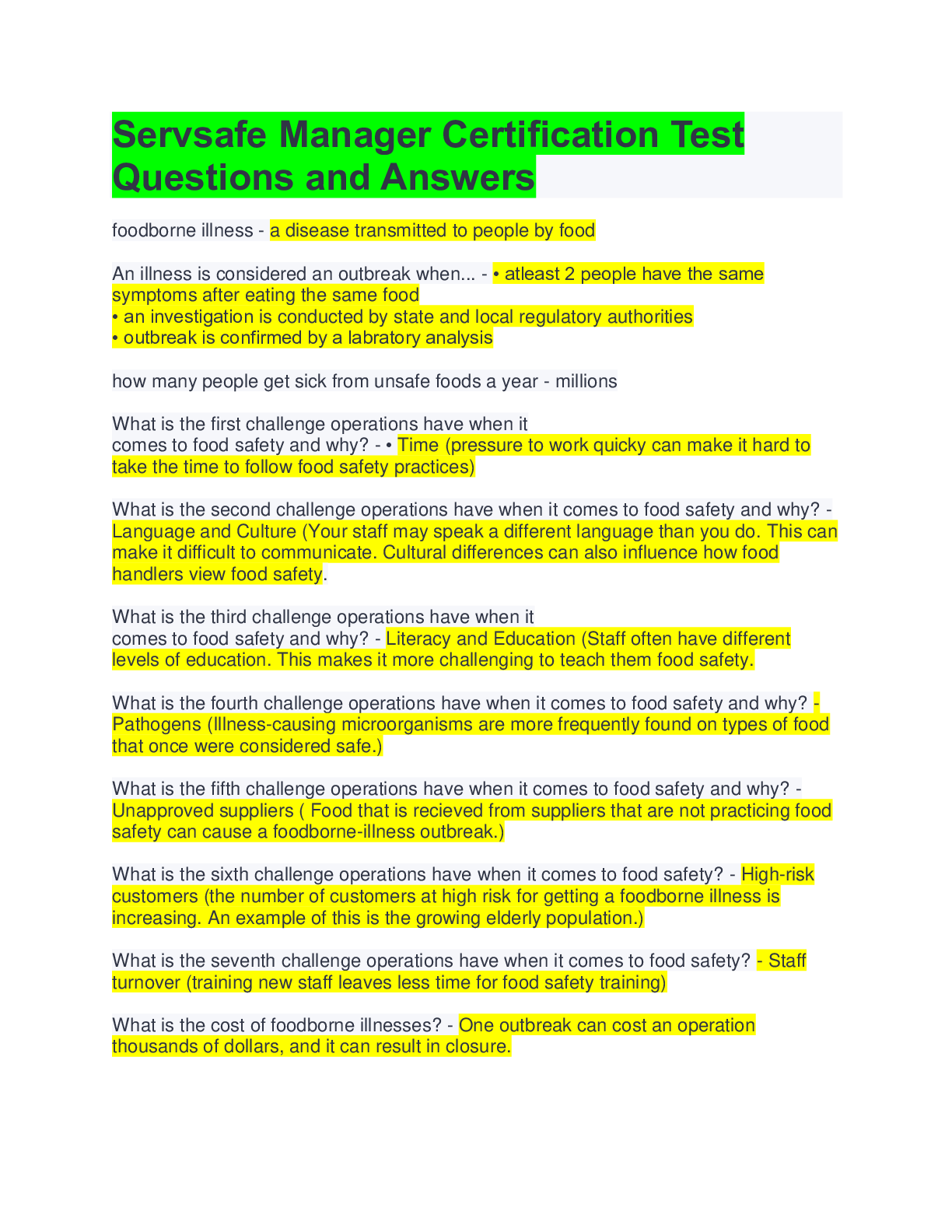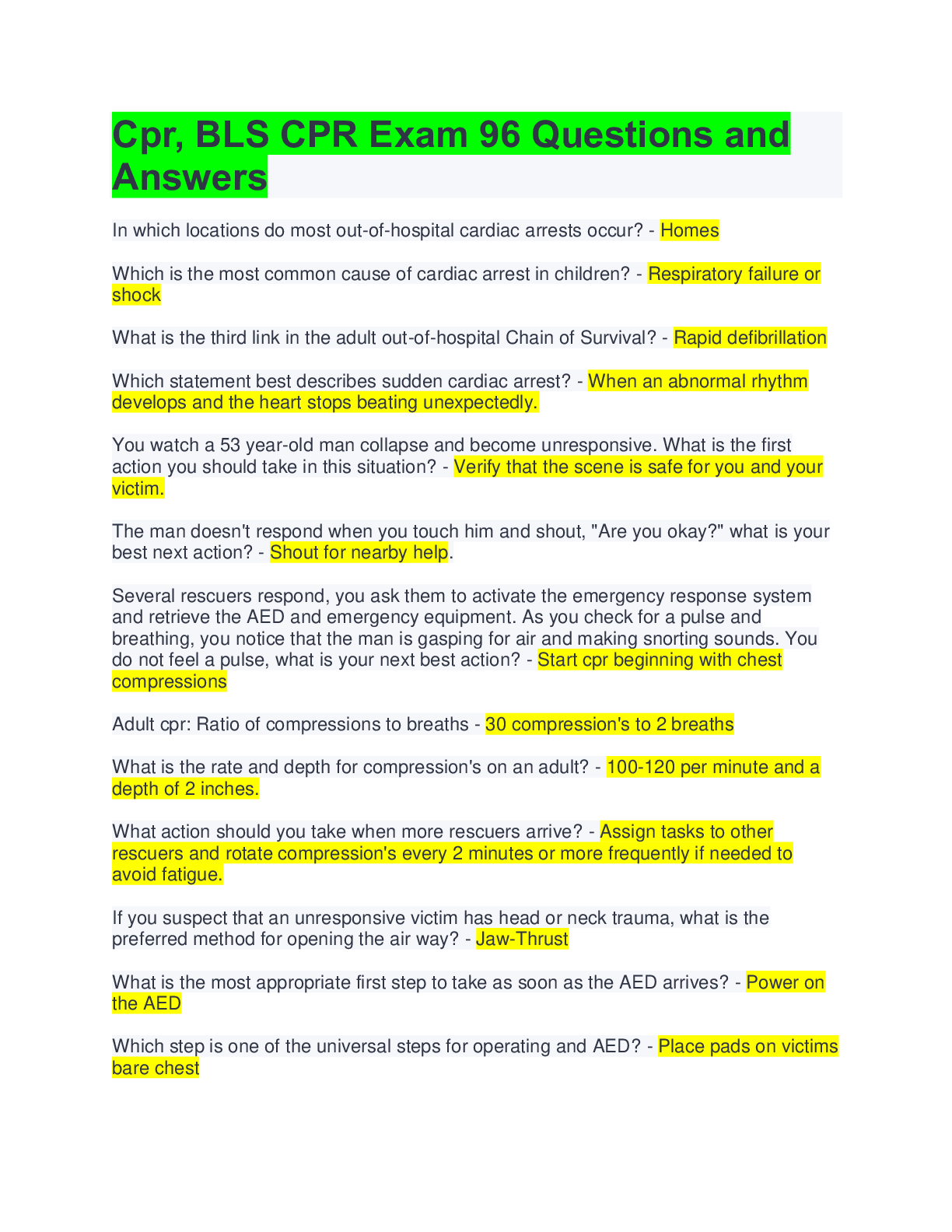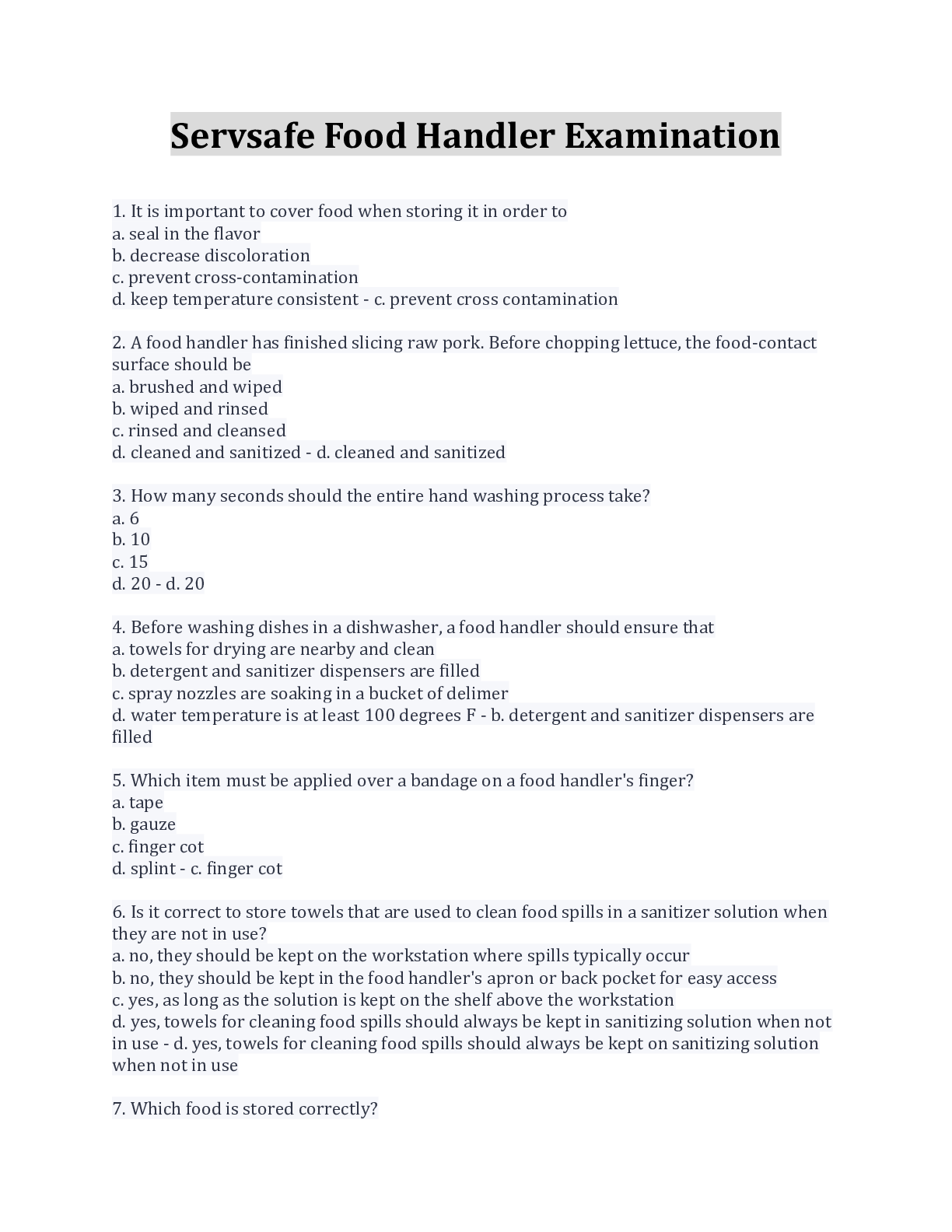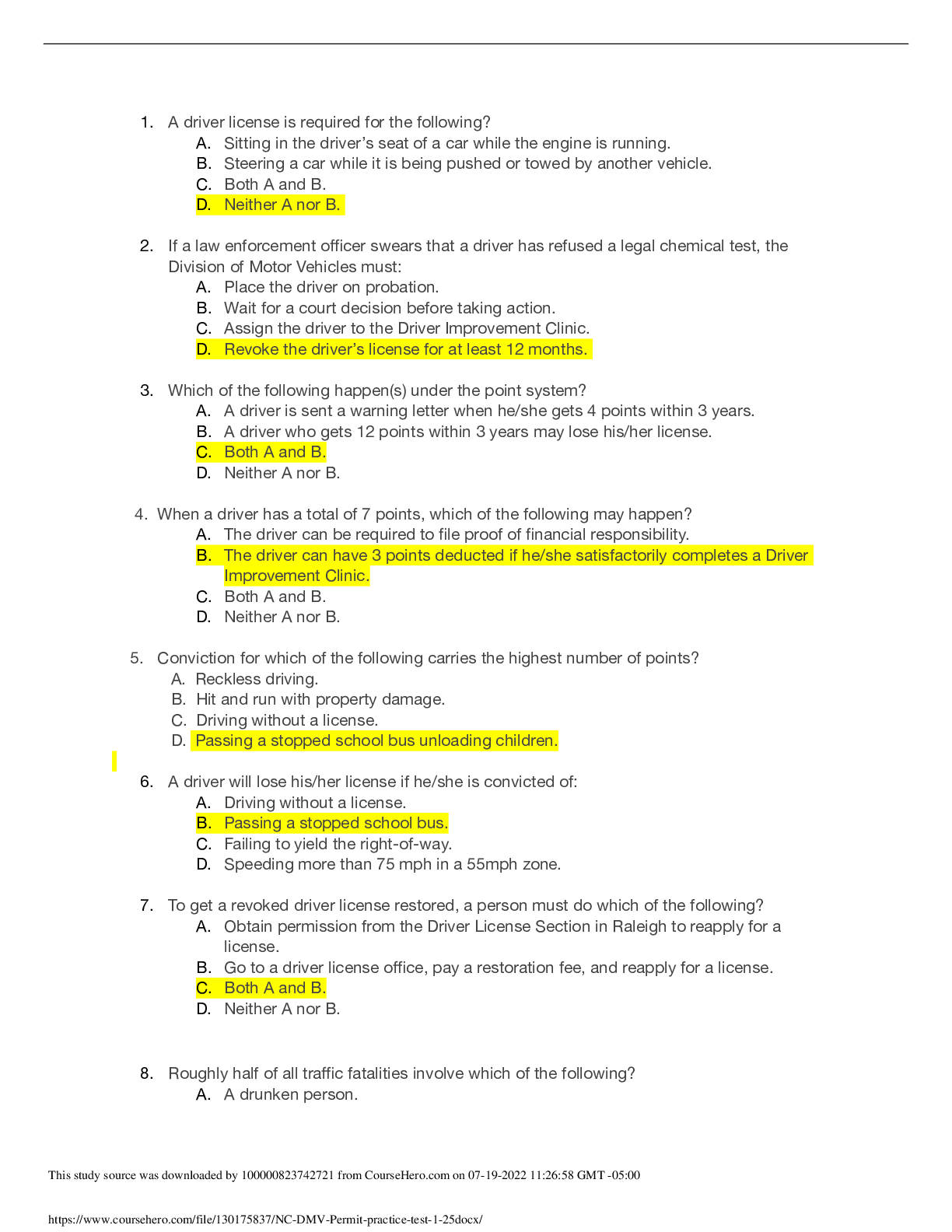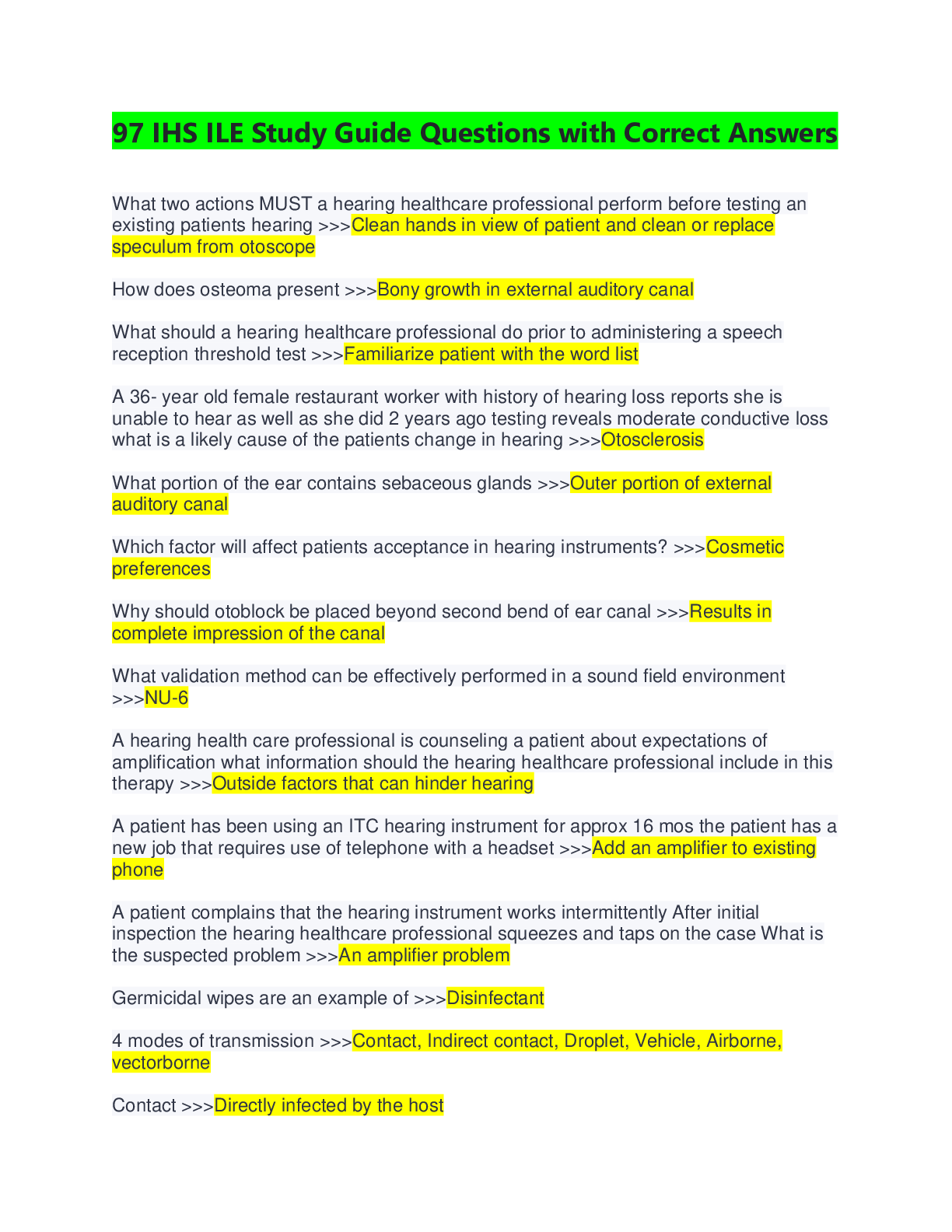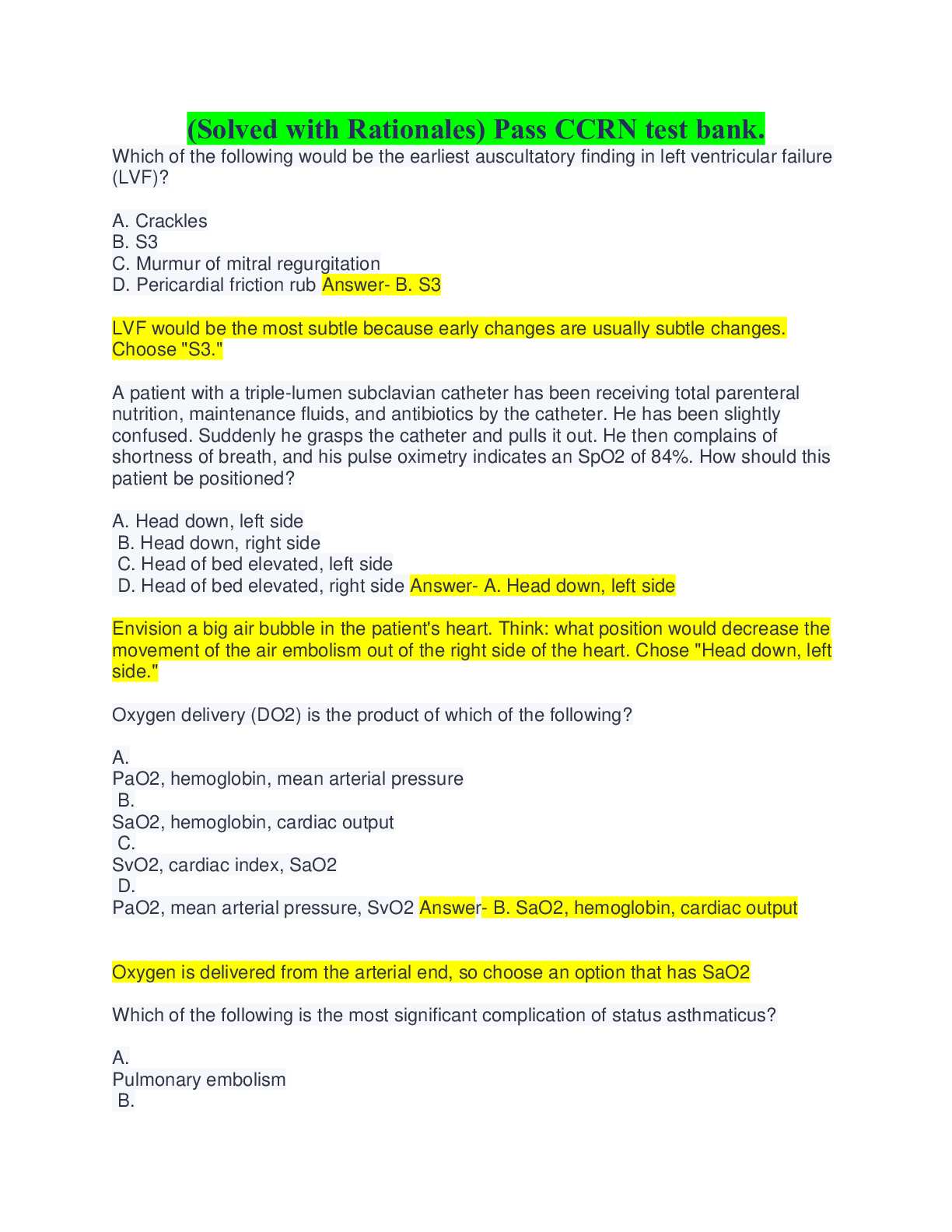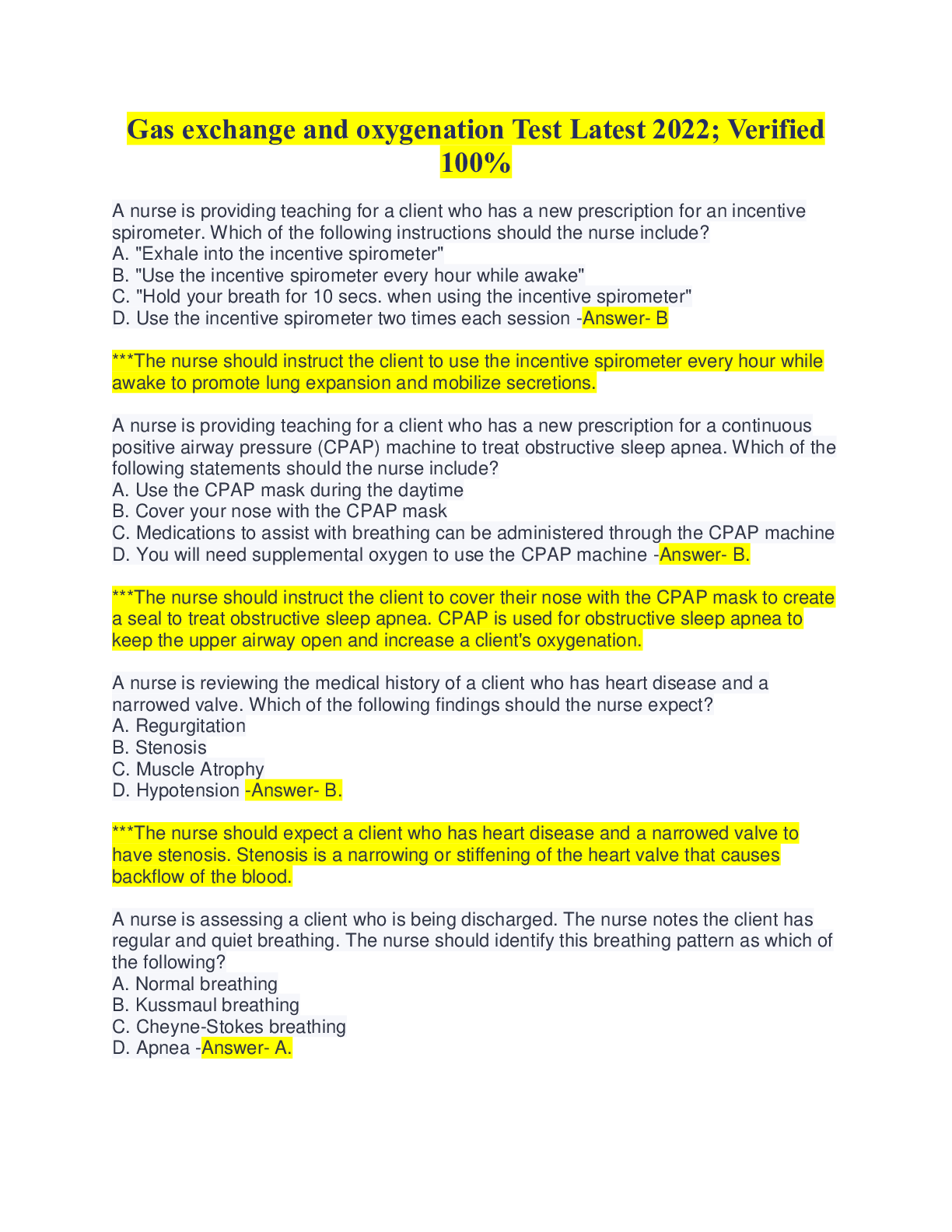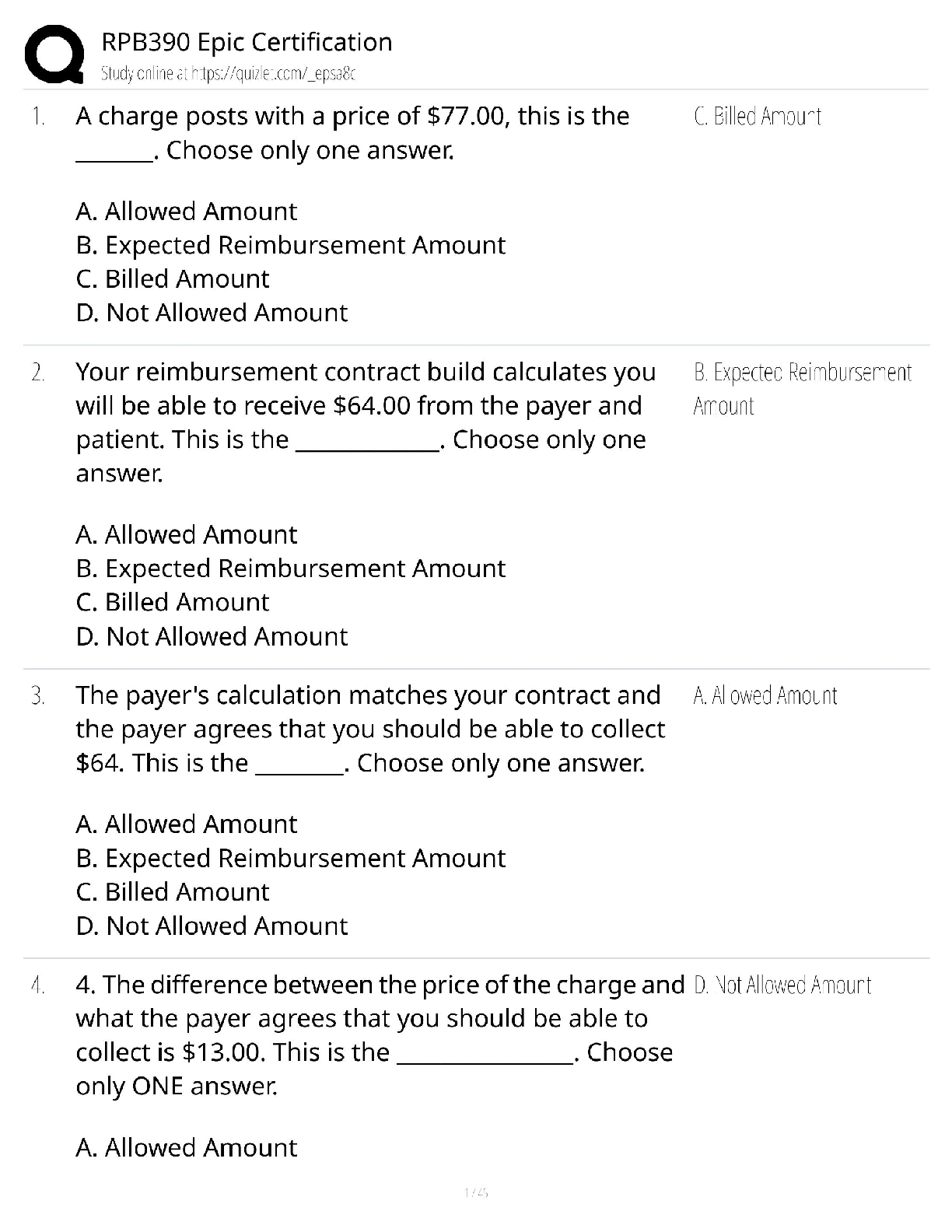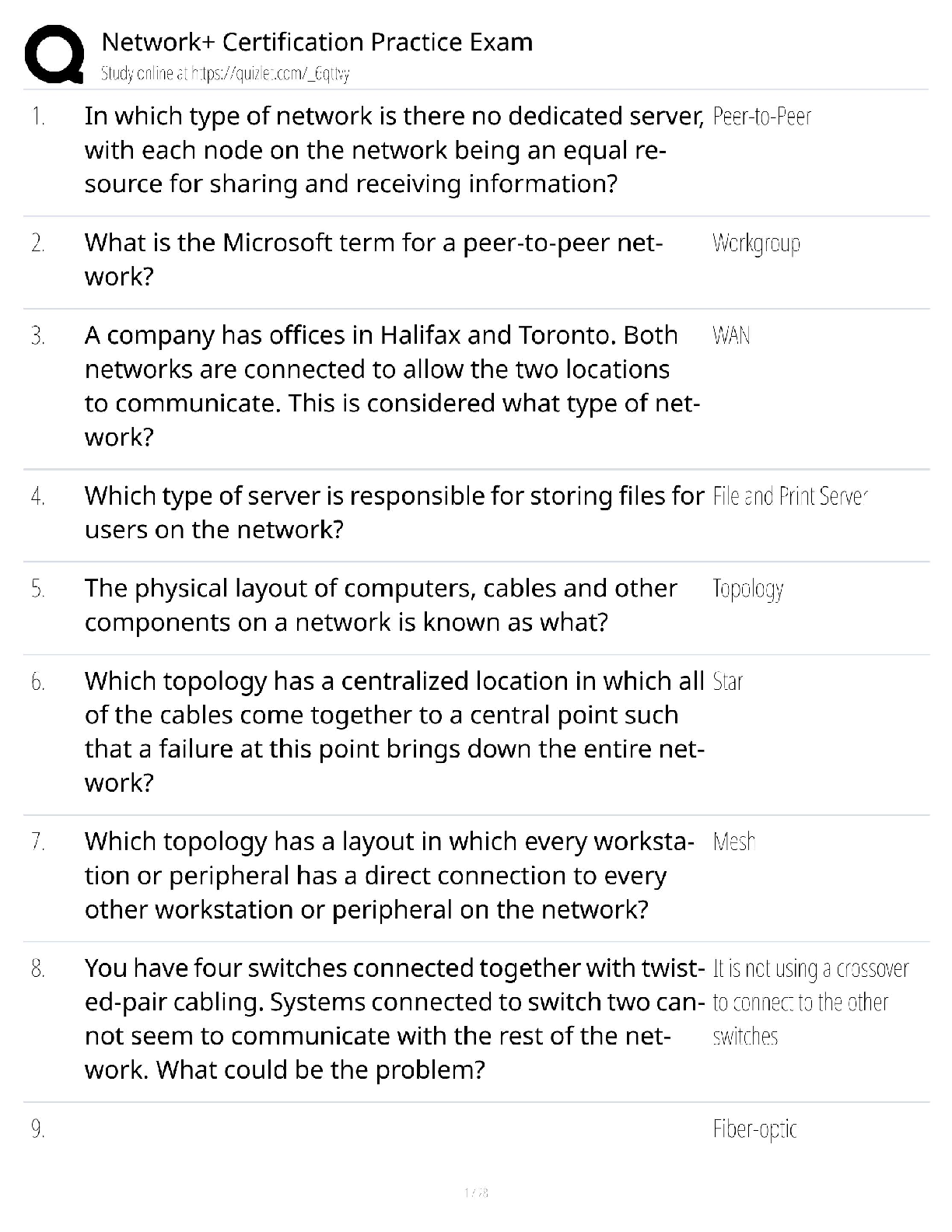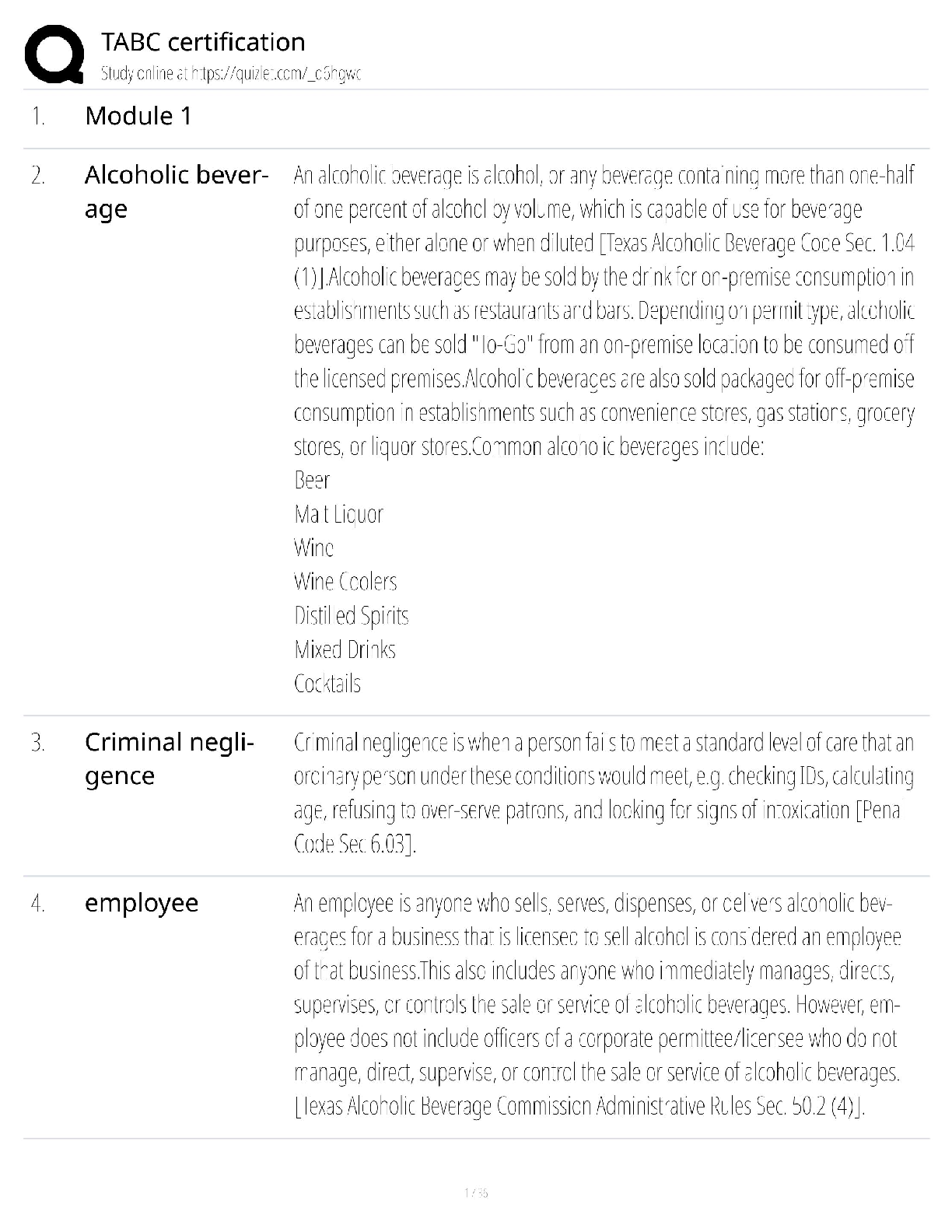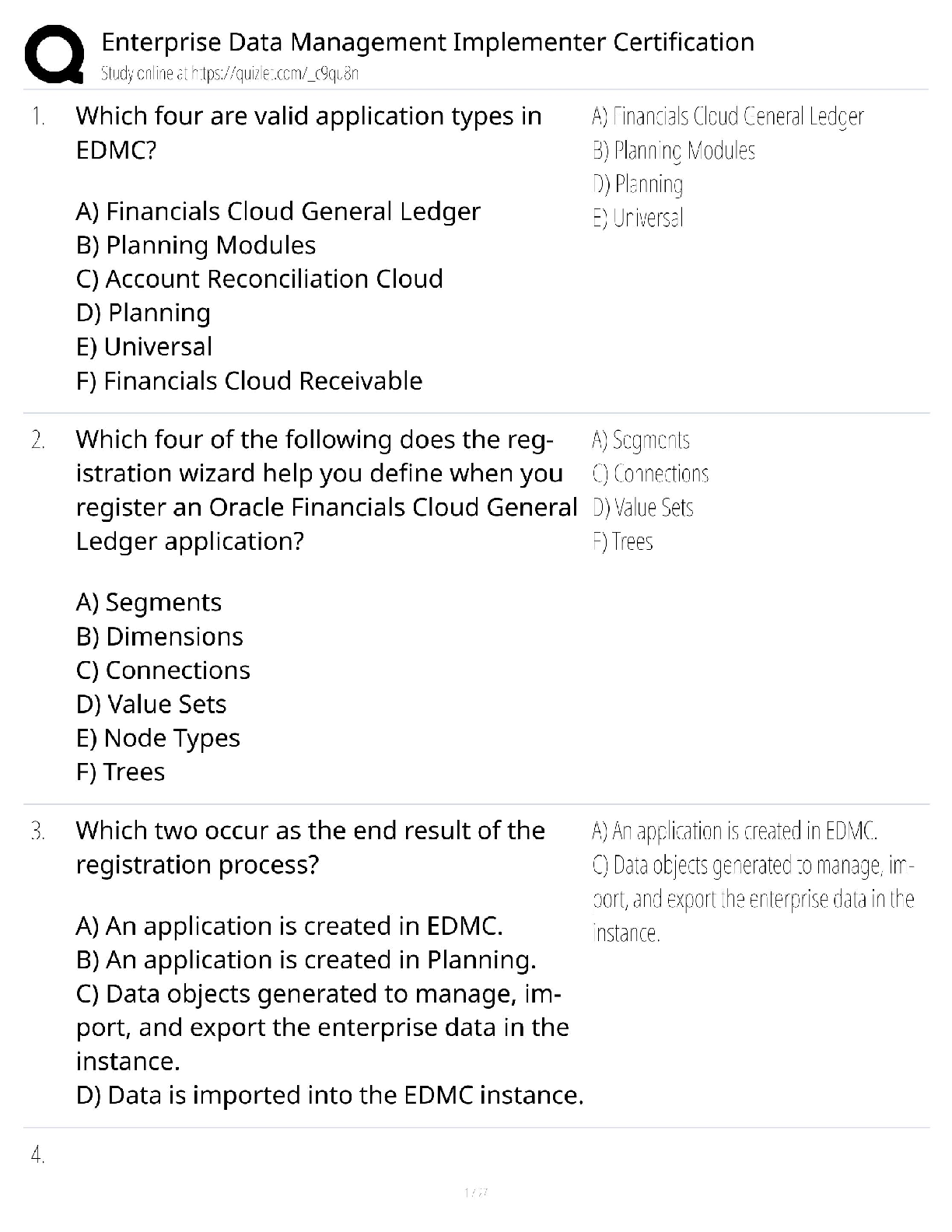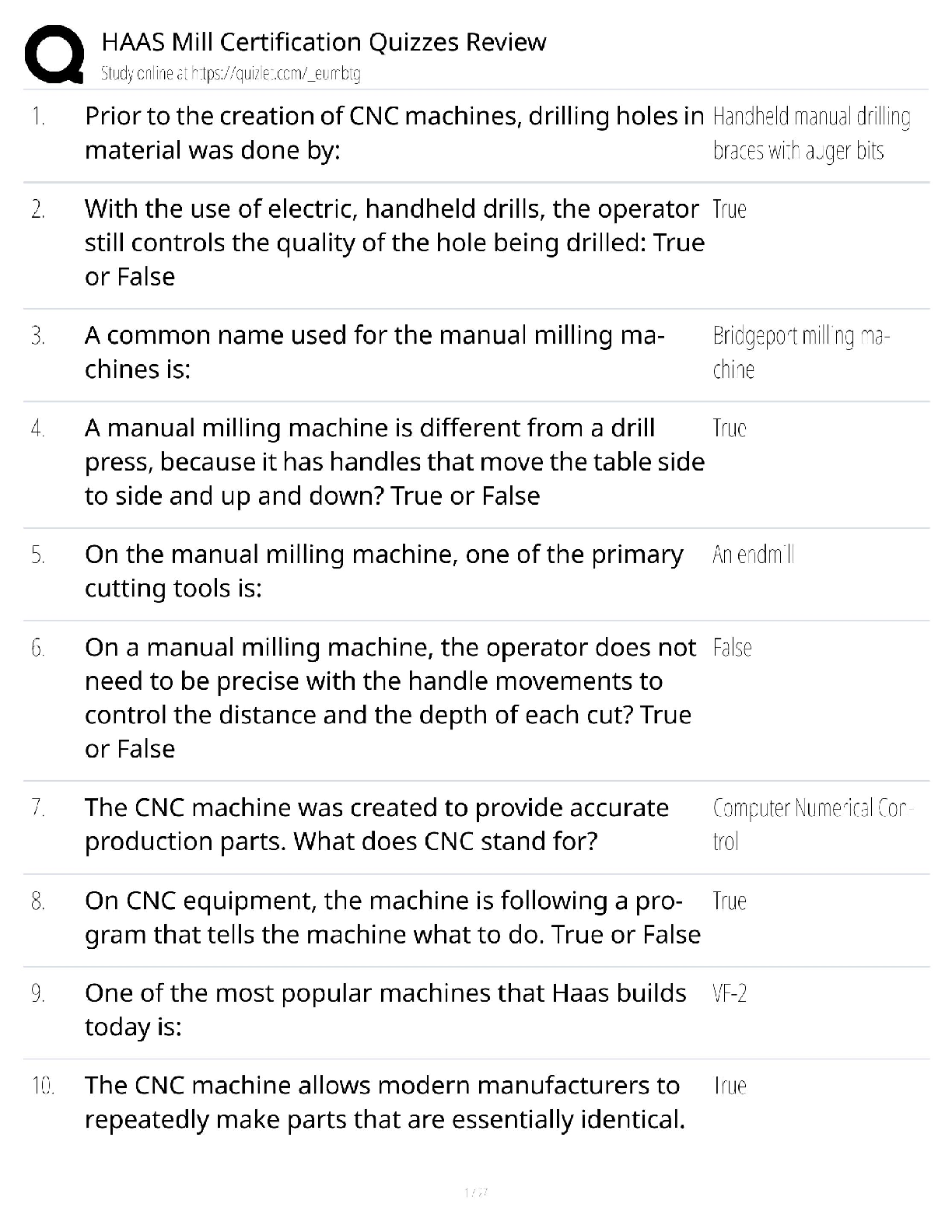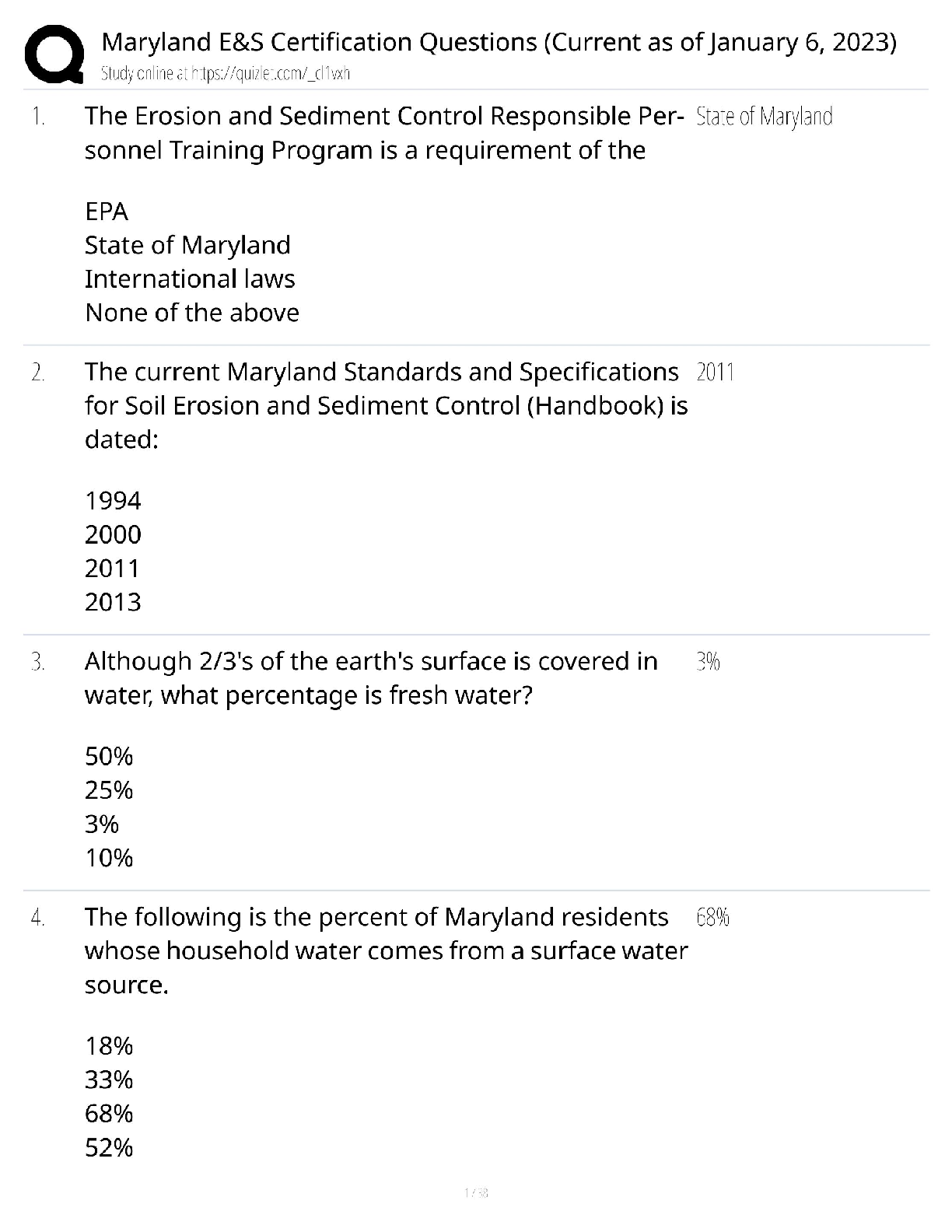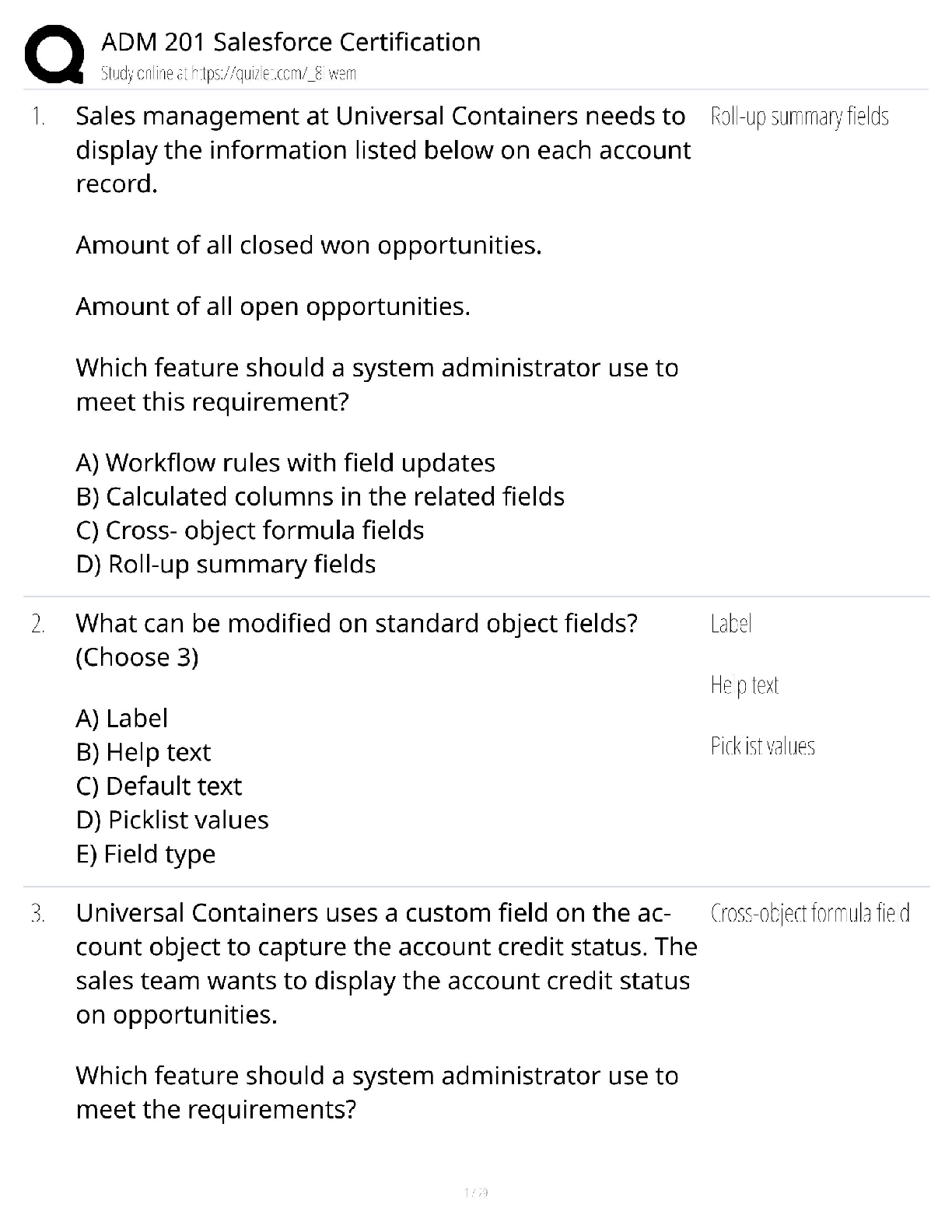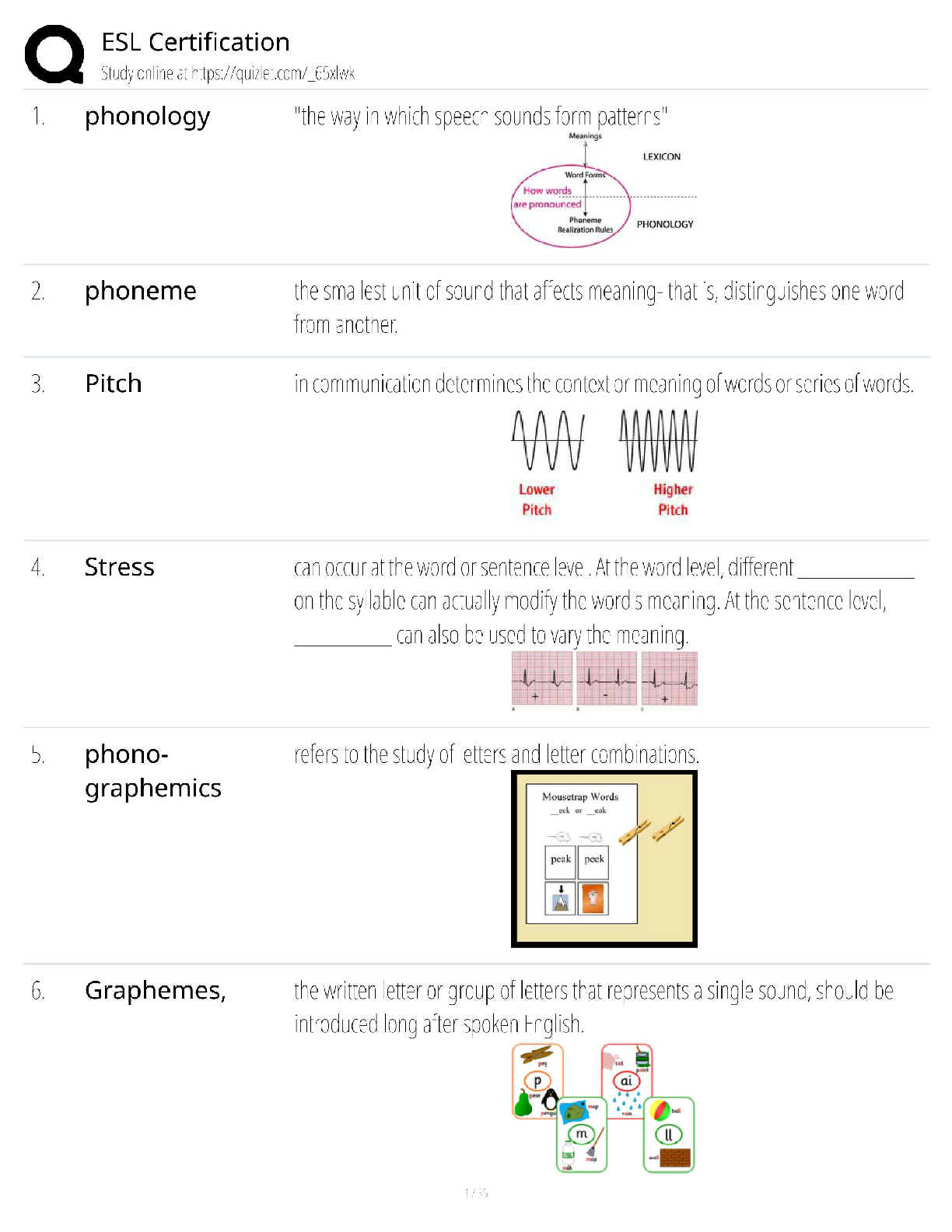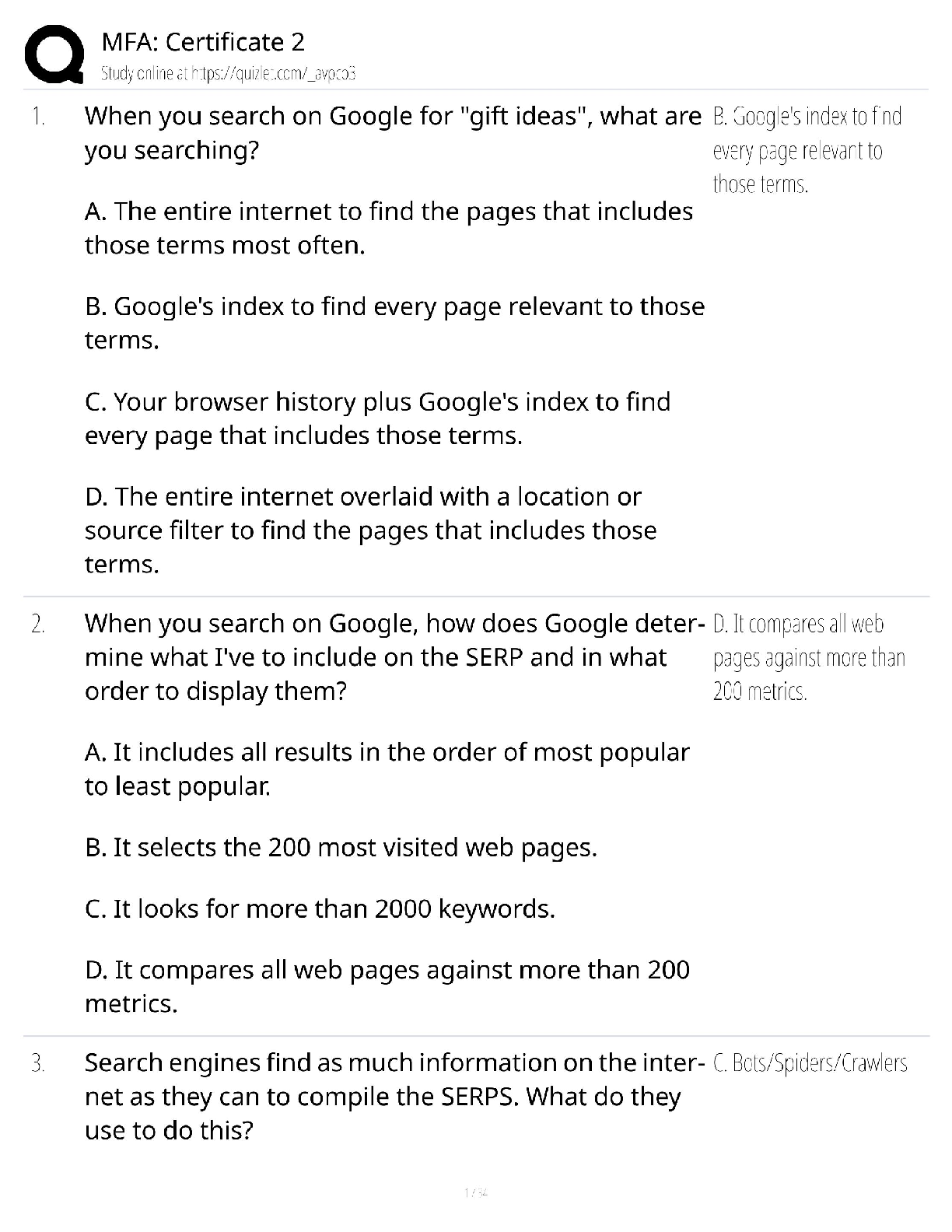*NURSING > QUESTIONS & ANSWERS > Cardiovascular CCRN2022 Questions and Answers With rationale (All)
Cardiovascular CCRN2022 Questions and Answers With rationale
Document Content and Description Below
Cardiovascular CCRN2022 Questions and Answers With rationale In general, what is the goal of critical care? - Answers- enhance O2 delivery and decrease O2 demand SUPPLY vs. DEMAND general reasons ... for increased HR - Answers- sympathetic response OR tissue hypoxia physiologic reason for increased RR - Answers- tissue hypoxia OR metabolic (lactic) acidosis general reason for increased RR - Answers- sympathetic response OR tissue hypoxia OR metabolic (lactic) acidosis What is a normal pulse pressure? What does the pulse pressure indicate? - Answers- normal pp is about 40 and generally indicates cardiac index narrow pp = hypovolemia, drop in CO widening pp = neurogenic shock, increased ICP How to tell generally which type of shock you are looking at based on vital signs? - Answers- * hypovolemic, cardiogenic - narrowed PP, increased HR (check the H&P, echo - does this person have a condition which would indicate potential for cardiogenic shock?) * neurogenic - widened PP, decreased HR * anaphylactic, septic - BP down, HR up Normal Hemodynamic and Oxygenation Parameters - Answers- coronary arteries - Answers- RCA, LCA > LCfx, LAD What structures are supplied by the RCA? - Answers- right atrium, right ventricle, posterior left ventricle (left ventricular inferior wall), SA node, AV node, top of septum with bundle What types of dysrythmias are expected in an inferior wall MI? In a 12-lead EKG, which leads are identified? - Answers- leads II, III, aVf (what structures are supplied by the RCA, which feeds the left ventricular inferior wall?) bradycardias and heart block > why? because RCA supplies this area Associated with AV conduction disturbances: 2nd-degree Type I, 3rd-degree heart block, sick sinus syndrome (SSS), and sinus bradycardia Development of systolic murmur: mitral valve regurgitation (MVR) secondary to papillary muscle rupture (Posterior papillary muscle-tethering distance is significantly greater in inferior compared with anterior myocardial infarction.) Tachycardia associated with inferior MI → higher mortality Also associated with RV infarct and posterior MI Use beta blockers and NTG with CAUTION *** What are important considerations in RV infarct? - Answers- A right-sided ECG may demonstrate the ST changes. Treatment - Fluids - Positive inotropes Avoid - Preload reducers → nitrates, diuretics - Caution with beta blockers, often cannot give initially due to hypotension [Show More]
Last updated: 3 years ago
Preview 1 out of 14 pages

Buy this document to get the full access instantly
Instant Download Access after purchase
Buy NowInstant download
We Accept:

Reviews( 0 )
$10.00
Can't find what you want? Try our AI powered Search
Document information
Connected school, study & course
About the document
Uploaded On
Aug 08, 2022
Number of pages
14
Written in
All
Additional information
This document has been written for:
Uploaded
Aug 08, 2022
Downloads
0
Views
221




